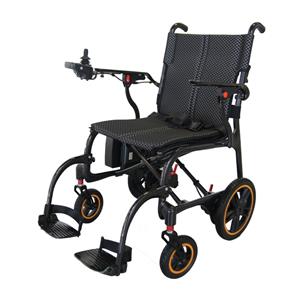What is the purpose of a transfer chair?
In the field of medical care and assistive devices, innovative technology is developing at an unprecedented pace. Among these advancements, the electric patient transfer chair stands out as a groundbreaking invention that is transforming the quality of life for patients and the elderly. This article delves into the purpose, functions, and benefits of transfer chairs and electric transfer chairs, and how they facilitate convenience and safety for users.
1. The Origin and Evolution of Transfer Chairs
The concept of the transfer chair originated from the needs of people with limited mobility. As the population ages, an increasing number of elderly and disabled individuals require assistive devices to help them with daily activities. Traditional transfer chairs were simple and relied on manual labor for movement, but with technological progress, the electric transfer chair emerged, offering users more convenience and autonomy.
2. Innovative Features of Electric Transfer Chairs
The innovation of the electric transfer chair lies in its electric drive system, which allows users to independently control the chair's movement without assistance. These chairs typically come with an easy-to-operate control panel, enabling users to move forward, backward, and turn with simple button presses.
3. Design Principles of Electric Patient Transfer Chairs
The design of electric patient transfer chairs adheres to three core principles: safety, comfort, and ease of use. Safety is the primary consideration; the chair must be able to bear the user's weight and move stably on various surfaces. Comfort is reflected in the chair's seat design, often using soft materials and good support to reduce discomfort from prolonged use. Ease of use is evident in the simplicity of operation, allowing even those with limited mobility to quickly master it.
4. The Social Significance of Electric Patient Transfer Chairs
The social significance of electric patient transfer chairs lies in their promotion of social inclusion and equality. By providing such assistive devices, individuals with limited mobility can participate more freely in social activities, improving their quality of life and social engagement. Additionally, they reduce the workload on caregivers and increase care efficiency.
5. Technology and Innovation in Electric Patient Transfer Chairs
Technological advancements have brought many innovations to electric patient transfer chairs. For example, some high-end models are equipped with smart sensors that can detect obstacles and stop automatically to prevent collisions. Some chairs can also be remotely controlled via smartphone apps, offering users more convenience.
6. Market Trends for Electric Patient Transfer Chairs
With the intensification of global aging issues, the market demand for electric patient transfer chairs is increasing annually. Manufacturers are continuously developing lighter, smarter, and more environmentally friendly transfer chairs to meet market demands. It is expected that this market will continue to grow in the coming years.
7. User Experience with Electric Patient Transfer Chairs
Users generally have a positive experience with electric patient transfer chairs. Many users report that these chairs greatly enhance their autonomy and quality of life. They can move more easily at home and even go out independently, which was previously unimaginable.
8. Applications of Electric Patient Transfer Chairs in Care
In the care sector, electric patient transfer chairs are widely used. They are not only used in hospitals and nursing homes but also widely employed by home caregivers. These chairs make transferring patients safer and more efficient, reducing the risk of injury from improper transfers.
9. Future Outlook for Electric Patient Transfer Chairs
Looking ahead, electric patient transfer chairs will continue to develop towards intelligence and personalization. With the application of artificial intelligence and machine learning technologies, future transfer chairs will be able to better understand user needs and provide more customized services.
10. Conclusion
As an important assistive device, the electric patient transfer chair is changing the lives of individuals with limited mobility. It not only improves user autonomy and quality of life but also brings revolutionary changes to the care industry. With continuous technological advancements, we can expect electric transfer chairs to become smarter and more convenient, bringing convenience to more people.
Through this article's exploration, we can see that transfer chairs and electric transfer chairs play a significant role in enhancing the quality of life for individuals with limited mobility. The development of electric patient transfer chairs not only reflects technological progress but also society's emphasis on inclusion and equality. With technology's ongoing development, we have reason to believe that electric patient transfer chairs will become more intelligent and convenient, providing convenience to more people.





